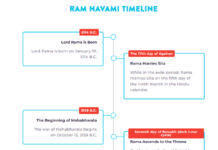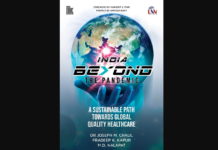
CHICAGO: Acknowledging the significant role played by Indian American physicians in the health care system of the country, Jeremy A Lazarus, President of the American Medical Association (AMA), strongly pitched for increasing the residency slots in general and International Medical Graduates in particular to overcome an impeding shortage of 60,000 physicians in the course of next four years only
Addressing the 900 plus physicians at the 31 Annual Convention of AAPI, Lazarus said that “as our country approaches a looming physician shortage, IMGs not only bolster the number of physicians in practice, but also fill gaps in primary care and medically underserved areas.” IMGs, he pointed out, tend to practice in areas that have a ratio of fewer than 120 physicians for every 100,000 people and a high percentage of elderly and minority patients.
Even as IMGs meet this critical need to improve U.S. health care for some of our more vulnerable populations, many IMGs are also committed to improving health care beyond their immediate communities.
In this context he lamented that “there aren’t enough residency slots to accommodate the growth in graduates of American medical schools which makes it much harder for international graduates to obtain positions.” The AMA goal is to have additional residency slots for 15,000 primary care, general surgery and other undersupplied specialty residency positions
AMA is also seeking an expansion of J-1 Visa waivers as that would make a difference in medical care for people in underserved rural and inner city neighborhoods. IMGs fill important roles in this regard – often practicing in rural and inner city communities that are typically under-served by the medical community.
Elaborating he said “despite this, the road to full-time practice in this country is not exactly easy for IMGs as many states actually have two different sets of evaluation criteria for acceptance into their residency programs – one for graduates of American medical schools, and one for graduates of international schools.”
“For instance, certain states will grant a U.S. medical graduate their unrestricted medical license after just one year of residency, whereas international medical graduates have to wait up to three years to even apply for their unrestricted license. ”
Yet another area where IMGs face relatively uphill task is getting proper representations in leadership positions on state medical boards, RRCs, and specialty boards. These organizations and training programs shape the licensing policies and essentially the future of the next generation of physicians in this country. IMGs need to be adequately represented in these organizations to make sure they are heard, he said.
AMA and its IMG Section, he said, is also lobbying to alleviate visa complications and delays. For example, the AMA supports federal legislation that would permanently reauthorize the J-1 Visa waiver program, expand the current cap on J-1 visa waivers from 30 positions to 50 positions per state, and exempt physicians-in-training from H-1B caps. He urged IMGS and Indian American physicians who are still out of fold of AMA to strengthen this organization and its IMGs section. “You are a vital part of the medical work force and the American people need your knowledge and your care,” he said.
Lavishing praise on AAPI, he said that this medical body not only is the nation’s largest international physician organization, it also represents the largest international physician population in the US. “It embraces more than 40 thousand physicians and 12 thousand medical students, residents and fellows. So it’s no surprise that Indian-born physicians have emerged as leaders in the national medical community, and in the American Medical Association. About 25 physicians of Indian origin are in our House of Delegates, the AMA’s policy-making body and many more are active in various AMA sections” he observed.
Lazarus then recalled his experience while attending Health Care summit in Cochin early this year. Many attendees at the meet practice medicine in the United States and a handful of other countries. “I was struck at this summit by the commitment to improve health care globally by the Indian physicians currently in practice here and in their native India,” he said.
Lazarus took the opportunity to update those attending the meet about AMA efforts in mending the broken Medicare system that faces a threat of a nearly 30% Medicare pay cut and the broken sustainable growth rate formula – the SGR – that’s not sustainable and now growing.
AMA also continues to push for repeal of the 15-member Independent Payment Advisory Board. “Physicians already face arbitrary cuts due to SGR. The last thing we need is double jeopardy,” he said
The AMA also continues to monitor implementation of the Affordable Care Act and fight for the changes physicians need. For example, the AMA is helping shape proposed federal rules and guidance for health insurance exchanges, so that both state-run and federally-run exchanges include provisions that protect physicians and patients. The AMA also worked toward improvements in Medicaid.
For the program to remain viable, physicians must receive adequate reimbursement. The provision in the ACA that calls for raising Medicaid pay to Medicare levels for primary specialties from 2013-2014 will help. That’s why, when proposals surfaced to eliminate this increase at the end of last year, the AMA organized 261 state, national and specialty medical societies in a letter of opposition. “Fortunately, Congress listened,” he said.
AMA is also working to improve outcomes for medical students. It also seeks to reduce both the disease and cost burdens associated with some of the nation’s most pervasive health conditions. Concluding he pitched again for widening AMA base. “If you are not a member of the AMA, I urge you to join us. We need your insights, your knowledge and your passion. Together, we are stronger,” he said.
Ramesh Soparawala
India Post News Service






